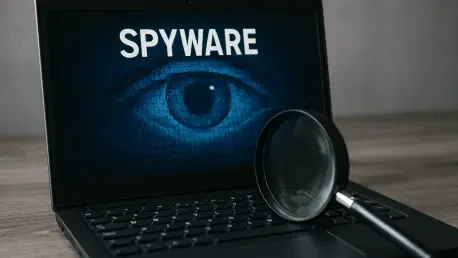In a world where billions rely on Google Chrome for secure browsing, a chilling revelation has emerged: a hidden flaw in the browser has been weaponized by sophisticated spyware to infiltrate systems undetected. Discovered by cybersecurity experts at Kaspersky Lab, this zero-day vulnerability, known as CVE-2025-2783, has been exploited by Memento Labs, a controversial spyware vendor with ties to nation-state actors. This breach not only threatens individual privacy but also exposes the darker underbelly of commercial surveillance tools in modern cyber warfare, raising urgent questions about the safety of everyday digital tools.
Unveiling a Hidden Threat: The Chrome Zero-Day Crisis
The discovery of CVE-2025-2783 has sent shockwaves through the cybersecurity community, revealing how even the most trusted platforms can become gateways for espionage. This zero-day flaw, a previously unknown weakness in Chrome’s architecture, allowed attackers to bypass critical security measures, leaving millions of users vulnerable. Kaspersky Lab researchers identified this exploit in a series of targeted attacks, underscoring the alarming reality that no software is immune to such stealthy intrusions.
What makes this situation particularly unsettling is the involvement of Memento Labs, an Italian firm notorious for developing surveillance tools. Their spyware, dubbed Dante, exploited this Chrome vulnerability to gain unauthorized access to sensitive systems, often without leaving a trace. This incident serves as a stark reminder of how quickly emerging threats can compromise the digital safeguards relied upon daily.
The Growing Danger: Why Commercial Spyware Matters
Beyond the technical breach, the rise of commercial spyware vendors like Memento Labs represents a disturbing trend in global cybersecurity. These entities profit by selling advanced surveillance tools to state-sponsored groups, often prioritizing financial gain over ethical considerations. With roots tracing back to the infamous Hacking Team, Memento Labs has been linked to campaigns such as “Operation ForumTroll,” which targeted entities in Russia and Belarus with precision and malice.
This commercialization of cyber espionage amplifies the risks for both individuals and organizations. Personal data, corporate secrets, and even national security information are now prime targets in a marketplace where surveillance is a commodity. As digital dependency grows, the unchecked proliferation of such tools demands greater scrutiny and action from tech giants and policymakers alike.
Technical Breakdown: How Memento Spyware Strikes
Delving into the mechanics of this attack reveals the ingenuity and danger behind Memento Labs’ methods. The CVE-2025-2783 vulnerability stems from a logic flaw related to Windows’ pseudo handles, obscure system values that attackers manipulated to escape Chrome’s sandbox—a security layer designed to isolate malicious code. By exploiting this gap, attackers gained access to privileged processes, effectively neutralizing one of Chrome’s core defenses.
The attack vector in campaigns like “Operation ForumTroll” relied on meticulously crafted phishing emails and short-lived malicious links, tailored to deceive specific targets. Once engaged, the Dante spyware, bearing eerie similarities to tools from Hacking Team’s past, infiltrated systems with alarming stealth. Though exact victim numbers remain undisclosed, the potential scale of impact is vast, given Chrome’s dominance with over 60% of the global browser market share, according to StatCounter data.
Kaspersky Lab’s analysis further highlights the spyware’s obfuscation techniques, using tools like VMProtect to evade detection. This level of sophistication indicates a deliberate effort to stay under the radar, challenging even seasoned cybersecurity professionals to uncover the threat. The technical prowess displayed here signals a need for heightened vigilance across all software platforms.
Expert Perspectives: Cybersecurity Leaders Sound the Alarm
Insights from industry leaders provide critical context to the severity of this Chrome exploit. Boris Larin, a principal security researcher at Kaspersky, described CVE-2025-2783 as a groundbreaking vulnerability during a presentation at the Security Analyst Summit. He emphasized that the misuse of Windows pseudo handles represents a new class of threats, warning, “This sandbox escape is a wake-up call—similar weaknesses could lurk in countless other applications.”
Larin’s critique of the Windows Duplicate Handle API as inherently “dangerous” points to systemic issues in legacy system designs that modern attackers exploit with ease. His team’s tracing of Dante spyware to Memento Labs also reinforces a persistent challenge: commercial spyware vendors continue to evolve, undeterred by past exposures. These expert warnings highlight the urgency of addressing both technical flaws and the broader ecosystem that enables such attacks.
Safeguarding Against Zero-Day Threats: Practical Defenses
While nation-state-level exploits like those from Memento Labs pose daunting challenges, actionable steps can help mitigate risks for everyday users and organizations. Keeping Chrome and all software updated is paramount; Google’s rapid patch for CVE-2025-2783 demonstrates the importance of installing updates immediately to close security gaps. Delaying updates can leave systems exposed to known threats.
Equally critical is exercising caution with suspicious emails and links, a tactic heavily used in campaigns like “Operation ForumTroll.” Scrutinizing unexpected messages, especially those prompting urgent action, can prevent initial compromise. Additionally, bolstering defenses with reliable antivirus software and enabling two-factor authentication adds essential layers of protection against unauthorized access. Staying informed through trusted cybersecurity sources ensures awareness of emerging dangers, empowering users to act proactively in a hostile digital landscape.
Reflecting on a Persistent Battle
Looking back, the exploitation of Chrome’s zero-day flaw by Memento Labs’ Dante spyware marked a pivotal moment in exposing the vulnerabilities within widely used technologies. The intricate attacks, leveraging obscure system quirks, revealed how deeply embedded risks could compromise even the most robust platforms. Cybersecurity teams worked tirelessly to dissect these threats, shedding light on the shadowy operations of commercial spyware vendors.
Moving forward, the battle against such cyber espionage demanded more than just technical fixes; it called for a global effort to regulate the spyware market and hold vendors accountable. Strengthening software security through proactive vulnerability hunting became a priority, as did educating users on digital hygiene. This saga served as a catalyst for change, urging tech industries and governments to collaborate in fortifying defenses against an ever-evolving enemy in the digital realm.









